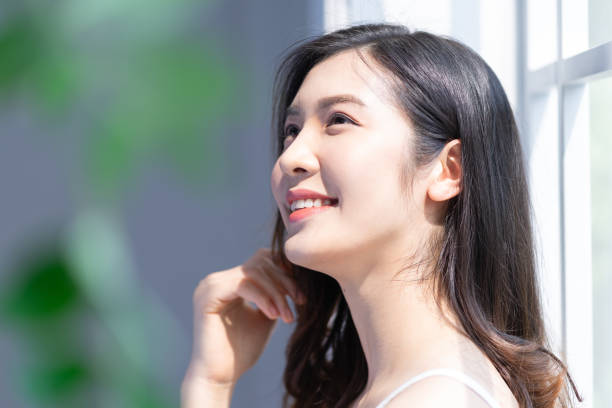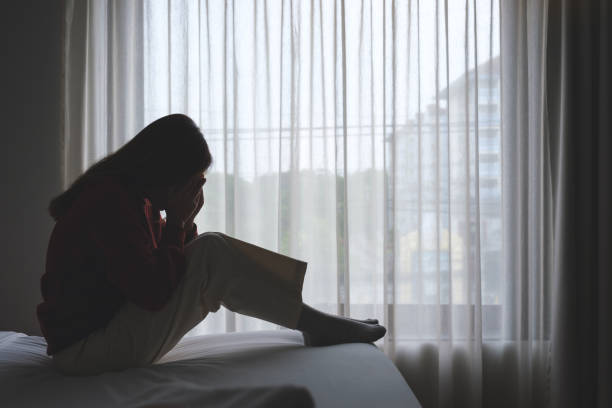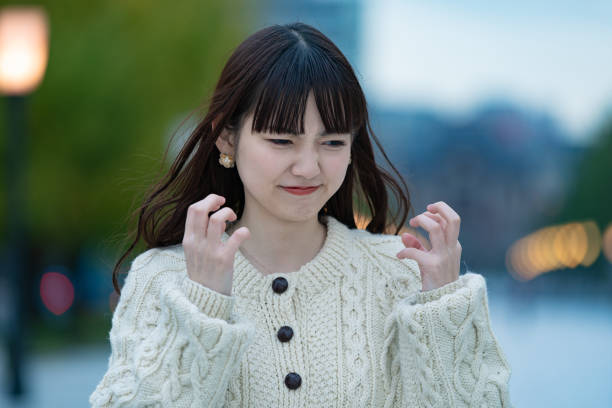Human beings have always lived surrounded by color, space, and design, whether in the natural environment or in the built world we have created. These elements are far more than aesthetic concerns—they are deeply intertwined with how we think, feel, and behave. From the calming effect of soft blues to the energizing quality of bright yellows, from the sense of openness created by spacious interiors to the comfort of well-designed environments, the physical world around us constantly shapes our mental and emotional state.
The impact of color, space, and design on the human mind is a multidisciplinary field that connects psychology, neuroscience, architecture, and art. It is concerned with how sensory input translates into emotion, cognition, and behavior. What we see, where we are, and how our surroundings are structured influence our productivity, creativity, stress levels, and even physiological responses such as heart rate and hormone levels.
Understanding this relationship has become increasingly important in modern life. As people spend more time indoors—at home, in offices, and in virtual environments—the way spaces are designed and colored can directly affect mental well-being. Psychologists and designers alike now recognize that environments are not passive backgrounds but active forces shaping our experience of the world.
The Psychological Meaning of Color
Color is one of the most powerful tools of visual communication. It has the ability to evoke emotions, create associations, and alter perceptions. The human brain processes color through the visual cortex, where wavelengths of light are translated into sensations of hue and brightness. These sensations then interact with memory, culture, and biology to create emotional responses.
The science of color psychology studies how different colors affect human behavior and mental states. While individual responses to color vary depending on culture and personal experience, certain general patterns have been observed across societies. For instance, warm colors such as red, orange, and yellow are often associated with energy, excitement, and warmth, while cool colors like blue, green, and violet tend to evoke calmness, relaxation, and stability.
Color also has measurable physiological effects. Studies have shown that exposure to red can increase heart rate and blood pressure, heightening alertness and intensity, whereas blue can slow the pulse and lower body temperature, promoting calmness. These reactions stem partly from evolutionary associations—red may signal danger or passion, while blue and green are reminiscent of sky and vegetation, which historically indicated safety and sustenance.
However, the emotional impact of color is not purely biological. Cultural context strongly influences how we interpret colors. In Western cultures, white is often associated with purity and peace, while in some Eastern traditions it symbolizes mourning. Similarly, red may signify love and celebration in some contexts but danger and warning in others. Thus, the meaning of color is both universal and deeply personal.
The Neurological Basis of Color Perception
The experience of color begins when light hits the retina at the back of the eye. The retina contains two types of photoreceptor cells: rods, which detect light and dark, and cones, which detect color. Humans have three types of cones—sensitive to red, green, and blue wavelengths. The brain interprets signals from these cones to produce the full spectrum of color we perceive.
Neuroscientific research shows that color perception involves not only the visual cortex but also areas of the brain linked to emotion and memory, such as the limbic system. This explains why colors can evoke feelings or recall vivid memories. For example, the sight of a warm sunset may trigger nostalgia, while a sterile white hospital room can induce unease.
Color also affects cognitive performance. Experiments have shown that blue environments enhance creativity and open-minded thinking, whereas red environments improve attention to detail and accuracy. This is because different colors stimulate different mental processes—blue encourages relaxation and abstract thought, while red triggers alertness and precision. The optimal use of color in design therefore depends on the desired psychological outcome.
Emotional and Behavioral Effects of Color
The relationship between color and emotion has been the focus of numerous psychological studies. Each hue can subtly alter mood and behavior in predictable ways.
Red, for instance, is associated with energy, power, and urgency. It increases physiological arousal and draws attention, which is why it is often used in warning signs and advertisements. Yet too much red can also provoke anxiety or aggression. Blue, conversely, is linked to calmness, trust, and reliability. It lowers stress and enhances feelings of stability, which is why many corporate brands and health institutions favor blue tones.
Green is strongly connected with nature and renewal. It promotes balance and relaxation, reduces eye strain, and restores mental energy—a phenomenon known as the “green effect.” Exposure to greenery has been shown to lower cortisol levels, improve mood, and enhance cognitive functioning. Yellow, often seen as the color of optimism and creativity, stimulates the nervous system and enhances mood but can also cause fatigue or irritation in excess.
Colors also interact with light and context. A dark shade of blue may feel somber in one setting but elegant in another; a bright yellow can be cheerful in daylight yet overwhelming under artificial light. Designers must consider these subtleties when choosing color schemes for environments meant to support specific emotional states or functions.
Color in Architecture and Interior Design
The influence of color on the human mind is particularly evident in architecture and interior design. Architects and designers use color strategically to shape perception, emotion, and spatial experience. Warm hues make spaces feel cozy and intimate, while cool tones can make them appear larger and more open.
In healthcare settings, color plays a critical role in patient recovery and comfort. Soft greens and blues are often used in hospitals to create calming environments that reduce stress and promote healing. Studies have shown that patients in rooms with natural colors and daylight recover faster and report less pain than those in sterile, colorless environments.
Educational spaces also benefit from color optimization. Classrooms painted in balanced tones of green or light blue have been found to enhance concentration and reduce fatigue among students. Offices that incorporate natural hues and varied color accents can improve creativity and job satisfaction. Even subtle changes—such as a shift from gray to soft pastel tones—can significantly affect how people feel and perform in a space.
In urban design, color influences how people experience public spaces. Vibrant murals, colorful facades, and artistic lighting installations not only beautify cities but also foster community pride and social interaction. Color, in this sense, becomes a form of psychological architecture—shaping not just individual emotion but collective identity.
The Psychology of Space
While color affects mood through visual and emotional cues, space impacts us through physical and perceptual dimensions. The way space is organized—its size, shape, openness, and structure—affects how we feel and behave. Human beings evolved in dynamic environments, so our brains are highly sensitive to spatial conditions.
Spatial psychology explores how volume, proportion, and arrangement influence perception. A cramped, cluttered room can trigger stress, while a spacious, well-lit environment promotes calm and creativity. Ceilings that are too low may feel oppressive, whereas high ceilings encourage expansive thinking. Even the placement of furniture and pathways influences how comfortable or anxious we feel in a setting.
The perception of space is closely tied to personal control and safety. In environments where movement feels restricted, stress hormones like cortisol tend to rise. Conversely, spaces that allow visibility, natural light, and freedom of movement foster a sense of security and well-being. This is why architects and psychologists emphasize the importance of “biophilic” design—spaces that mimic the openness and sensory variety of natural environments.
Spatial Design and Cognitive Performance
The design of space directly influences cognitive performance and emotional regulation. Research in environmental psychology shows that open, flexible layouts enhance collaboration and creativity, while organized, semi-enclosed spaces support focus and concentration. In workplaces, for example, a mix of open areas for communication and private zones for deep work tends to optimize productivity.
Lighting and acoustics also shape spatial perception. Natural light not only improves visual comfort but also regulates circadian rhythms, which affect mood and energy levels. Poor lighting, especially harsh artificial illumination, can lead to eye strain, headaches, and depression. Similarly, noise levels impact mental clarity; well-designed acoustics reduce distraction and mental fatigue.
Spatial design extends beyond functionality—it influences identity and behavior. Museums, for instance, use spatial sequences to guide emotional engagement, while religious architecture employs symmetry, height, and light to evoke awe and contemplation. Retail spaces use spatial cues to influence customer movement and decision-making, subtly shaping buying behavior. The geometry of space, therefore, becomes a psychological tool.
The Role of Design in Mental Well-being
Design encompasses both color and space, integrating them into a coherent sensory experience. Good design is not only about aesthetics; it is about creating environments that support human well-being. Every line, texture, and material can affect how we think and feel.
Design psychology emphasizes harmony between the human mind and the physical world. It draws upon cognitive science to create environments that reduce stress and enhance function. For instance, smooth curves and natural shapes are perceived as more comforting than sharp angles, possibly because the brain associates them with safety. Similarly, symmetry and balance in design tend to be pleasing because they suggest stability and order.
Poor design, on the other hand, can have negative psychological consequences. Environments that are cluttered, noisy, or poorly lit contribute to cognitive overload and stress. Prolonged exposure to such settings can impair attention, memory, and mood. The mental fatigue associated with chaotic or unattractive surroundings underscores the importance of design as a public health issue as much as an artistic one.
Biophilic and Sustainable Design
One of the most significant developments in contemporary design is the rise of biophilic and sustainable architecture. Biophilic design seeks to reconnect humans with nature through natural materials, organic forms, and exposure to daylight and vegetation. This approach is grounded in the idea that human beings have an innate affinity for nature—a concept known as the biophilia hypothesis.
Scientific studies support the psychological benefits of biophilic design. Environments that incorporate natural elements such as plants, wood, and water features have been shown to reduce stress, improve mood, and enhance cognitive performance. Even indirect references to nature, like organic patterns or natural color palettes, can evoke feelings of tranquility.
Sustainability also contributes to psychological well-being. Spaces designed with environmental responsibility—using renewable materials, efficient lighting, and air purification—promote a sense of purpose and connectedness. Knowing that one’s environment is ecologically conscious fosters positive emotions and reduces guilt associated with environmental harm. Thus, sustainable design is not just about protecting the planet but also nurturing the mental health of its inhabitants.
Color, Space, and Design in the Digital Age
In the modern era, digital environments have become an integral part of daily life. The same psychological principles that govern physical spaces also apply to virtual ones. Interface design, website layouts, and digital color schemes all influence user experience and cognitive engagement.
Blue tones, for example, are commonly used in social media platforms because they evoke trust and calmness. Bright, contrasting colors draw attention to interactive elements, while soft gradients and balanced spacing create comfort and visual flow. The arrangement of digital space—the placement of buttons, text, and images—affects how easily users navigate and retain information.
Virtual reality and augmented reality extend these concepts further by creating immersive environments that can elicit strong emotional responses. Designers must carefully manage color, light, and spatial cues to avoid sensory overload or disorientation. As technology advances, the psychological impact of digital design will continue to shape human cognition and behavior in profound ways.
The Cross-Cultural Dimension of Design
While psychological responses to color and space have biological roots, culture plays a significant role in shaping perception. Different societies attach distinct meanings to colors, symbols, and spatial arrangements. For example, red signifies luck and prosperity in Chinese culture but may symbolize danger in Western contexts. Similarly, spatial design that values openness and minimalism in Scandinavian culture may be perceived as cold or empty in more communal societies.
Architectural traditions reflect these differences. Japanese design emphasizes simplicity, natural materials, and harmony with nature, which foster contemplation and serenity. Middle Eastern architecture, with its intricate patterns and enclosed courtyards, creates intimacy and protection from harsh climates. Western design often focuses on symmetry and light, symbolizing order and rationality. Each approach reveals a psychological adaptation to cultural values and environmental needs.
Understanding these cultural nuances is crucial in global design practice. As societies become more interconnected, the challenge is to create spaces and color schemes that respect cultural identity while promoting universal well-being.
The Interplay of Sensory Experience
Color, space, and design are not isolated elements—they interact continuously to create multisensory experiences. The way light falls on a surface changes the perceived color; the size of a room affects how color is interpreted; texture and sound can enhance or diminish the emotional impact of space. Our brains integrate these sensory inputs into a single perceptual and emotional whole.
For instance, a small, dimly lit room painted in dark hues may feel confining, whereas the same colors in a larger, well-lit space might feel luxurious and comforting. Similarly, a minimalist room with smooth textures and gentle lighting can promote relaxation, while complex patterns and bright lights can energize or overwhelm, depending on context.
Designers who understand sensory integration can craft environments that align with the desired psychological effect. By balancing color intensity, spatial proportion, texture, and light, they can create spaces that either stimulate or soothe, inspire or ground the human mind.
The Future of Environmental Psychology and Design
As neuroscience and environmental psychology advance, the scientific understanding of how physical environments affect mental states is becoming increasingly precise. Future design practices are likely to rely on data from brain imaging, biometric sensors, and behavioral studies to create evidence-based environments tailored to human needs.
Smart architecture—buildings equipped with sensors that adapt lighting, temperature, and color in response to human presence—represents the next frontier. These intelligent environments could monitor stress levels and automatically adjust surroundings to optimize comfort and focus. Similarly, virtual design tools are allowing architects to simulate the emotional impact of spaces before they are built.
The integration of science and design marks a return to an ancient truth: that the spaces we inhabit reflect and shape our inner worlds. By designing with psychological awareness, humanity can create environments that not only please the eye but also nurture the mind and spirit.
Conclusion
Color, space, and design are far more than aesthetic choices—they are fundamental forces that shape human perception, emotion, and behavior. Every hue, structure, and form interacts with the brain’s sensory and emotional systems, influencing how we feel, think, and act.
The red that excites, the blue that calms, the spacious room that frees the mind, the balanced design that brings harmony—these are not coincidences but reflections of our deep biological and psychological connection to the environment. Thoughtful design can heal, inspire, and empower; poor design can stress, distract, and confine.
As our world becomes increasingly artificial and digital, the challenge for designers, architects, and psychologists is to preserve the human essence of space and color. The future depends on our ability to create environments that honor both the mind’s complexity and nature’s wisdom. By aligning art, science, and empathy, design can become not just a craft of beauty, but a science of well-being—a bridge between the external world we build and the inner world we inhabit.






